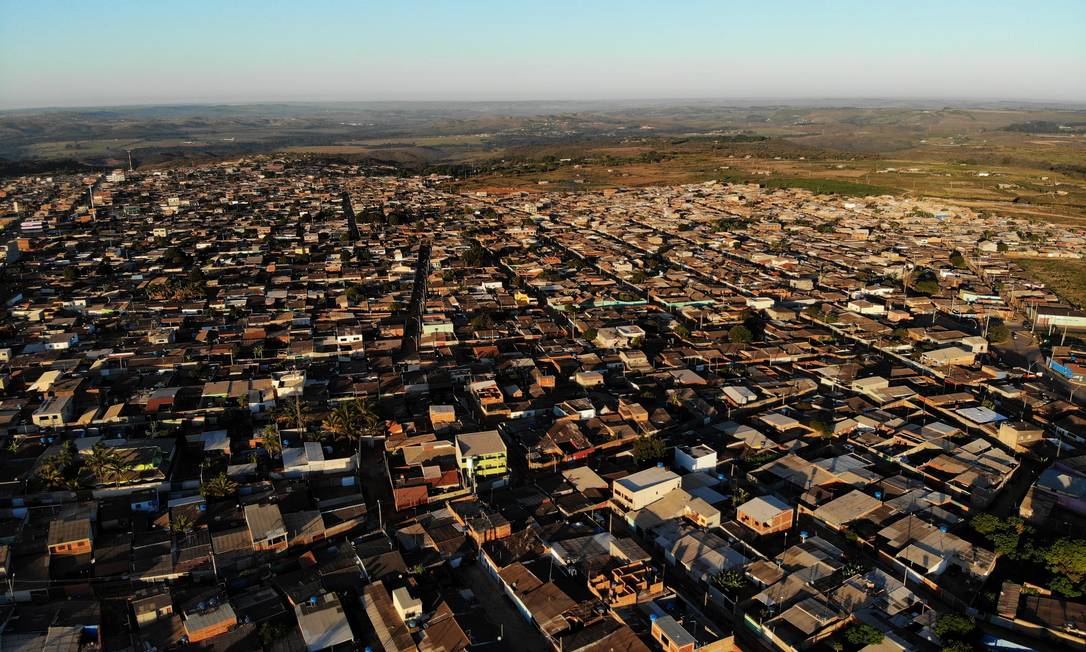
This is the 10th edition of our media watchdog series Best and Worst International Reporting on Rio’s Favelas, part of RioOnWatch’s ongoing conversation on the media narrative and portrayal of favelas.
A Significant Improvement in International Media Coverage in 2023
With some distance from the specter of Covid-19, the period of political transition and tension took center stage in early-year international media coverage of Brazil, particularly due to the January 8 attacks on Brasília. The political divide in the country remained under scrutiny, but propositive analyses were also conducted, with a significant emphasis on environmental sustainability in diplomatic discussions.

In this context, 2023’s international reporting on favelas began with the announcement of a significant step towards their greater representation, with the historic appointment of a second favela native as federal minister, Anielle Franco—born and raised in Rio de Janeiro’s Complexo da Maré—Minister of Racial Equality. Sister of slain councilwoman Marielle Franco, Anielle’s appointment was reported by Time and The Guardian.
Mirroring this scenario of change and the search for more genuine representation of favelas, international headlines have shown growing care in their approaches, giving space to the active voices of residents and organizers. Compared to the first edition of this series in 2014, there is no doubt: back then, the majority of international reports on favelas were stereotypical, filled with harmful, counterproductive, and lazy narratives. This led us to start the annual series with the worst reports: there were so few good ones to speak of. And why is this important? Because the perceptions and actions of Brazilian governments, from municipal to national, are also guided by international public opinion.
Fortunately, today, we can attest that the vast majority of coverage of favelas in prominent global outlets feature residents as protagonists and explore a wide range of topics, some presenting profound perspectives with significant nuance. As a result, this year, we will focus solely on these—the best—mentioning errors and limitations when appropriate throughout the text.
Climate Justice and Local Protagonism as a Focus
Throughout 2023, as we witnessed the deepening climate crisis in Brazil and around the world, an increasing focus of international press interest emerged on favelas as the early arenas of the climate transition, for better or for worse, and how they cope with this crisis, which has increasingly led to water and energy shortages.
In April, The New York Times published the article “Brazil’s Favelas Offer Lessons in Building Trust,” sharing solutions developed in the favelas and raising awareness among readers about the crises they face. The article highlighted the critical impact of historically-generated mistrust towards authorities, especially during situations like the pandemic, and emphasized the importance of community movements in mitigating its damages. Community collectives from Jacarezinho, Morro dos Prazeres, and Maré informed the article.
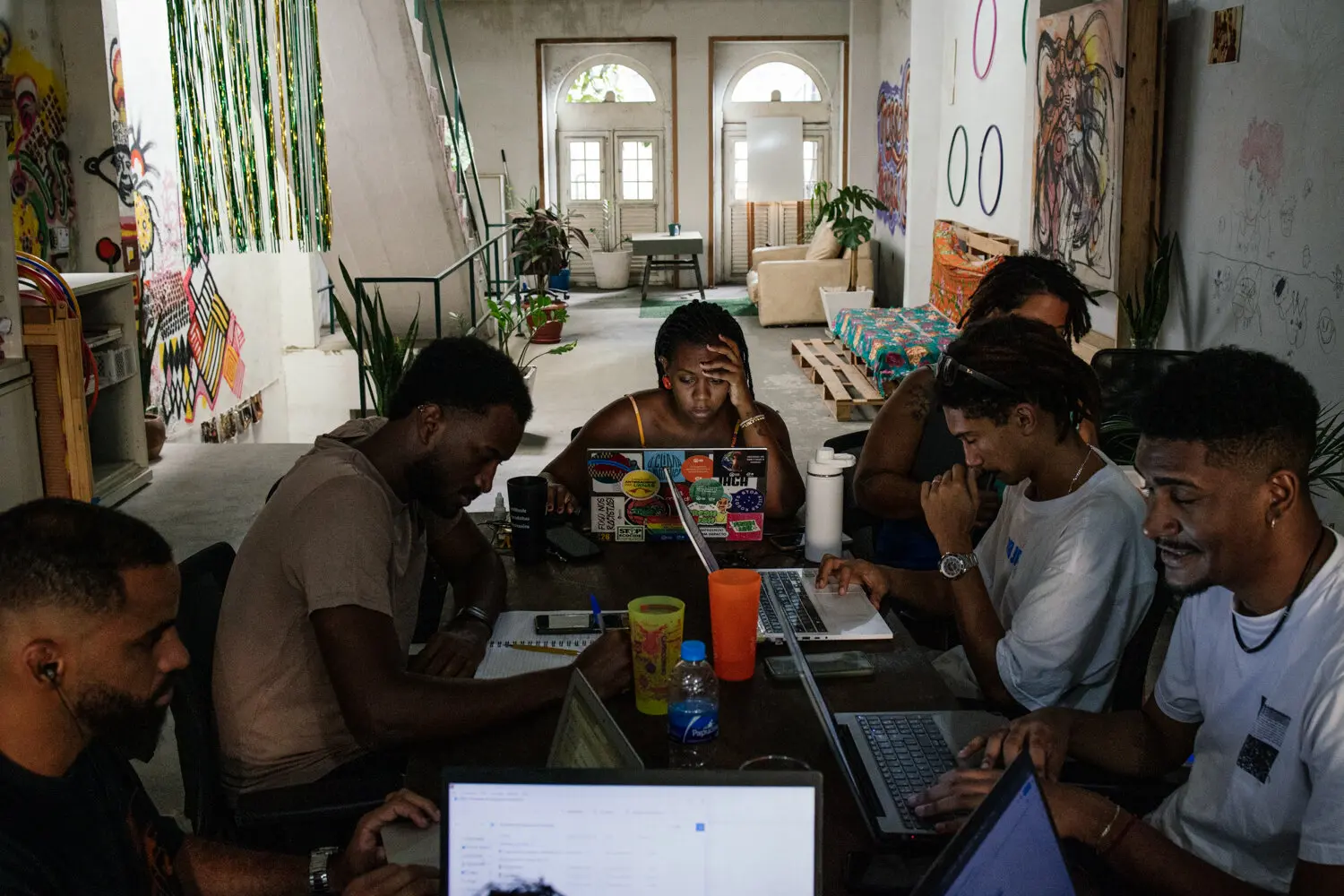
Another propositive approach, Reuters published an article titled “Armed with Data, Slum Dwellers Demand Better Services,” showcasing how urban settlements in South Africa and Brazil, exemplified by LabJaca in Jacarezinho, are increasingly collecting their own data, recognizing the need to gather information to advocate for rights. Although the term ‘slum,’ which we have been insisting is inaccurate and not suitable to describe favelas, is used here, it may be attributed to the inclusion of South Africa in the article. South African communities often use the term, referring to what in Brazil would be considered still improvised and yet-to-be consolidated informal settlements.
In “Extreme Weather Events Only Serve to Deepen Brazil’s Inequality” in The Brazilian Report, the Santa Marta favela in Rio’s South Zone serves as a backdrop to highlight Brazilian injustice regarding access to the most basic resource for existence—water—especially in times of extreme heat. Unlike the surrounding neighborhood of Botafogo, the favela went without water for six days. In a related story, Chinese CGTN produced a video report on how Rocinha residents face extreme heat without access to electricity.
However, despite the scorching heat and an increasingly apparent lack of willingness from local government to respond sensibly and responsibly, as reported in the above-mentioned The New York Times article, others have also showcased the favelas’ resilience in attempting to address the issue. In “‘Hell de Janeiro’: Scorching Heat Highlights Brazil’s Glaring Inequality,” featured in The Guardian, the brutality of this summer’s 58.5°C heat and its disproportionate impact on favelas is discussed. The response developed by Luis Cassiano Silva from Parque Arará, North Zone of Rio, who installed a now-renowned green roof on his house, was also highlighted. Reuters and Undark also produced extensive reports on the work of Green Roof Favela.
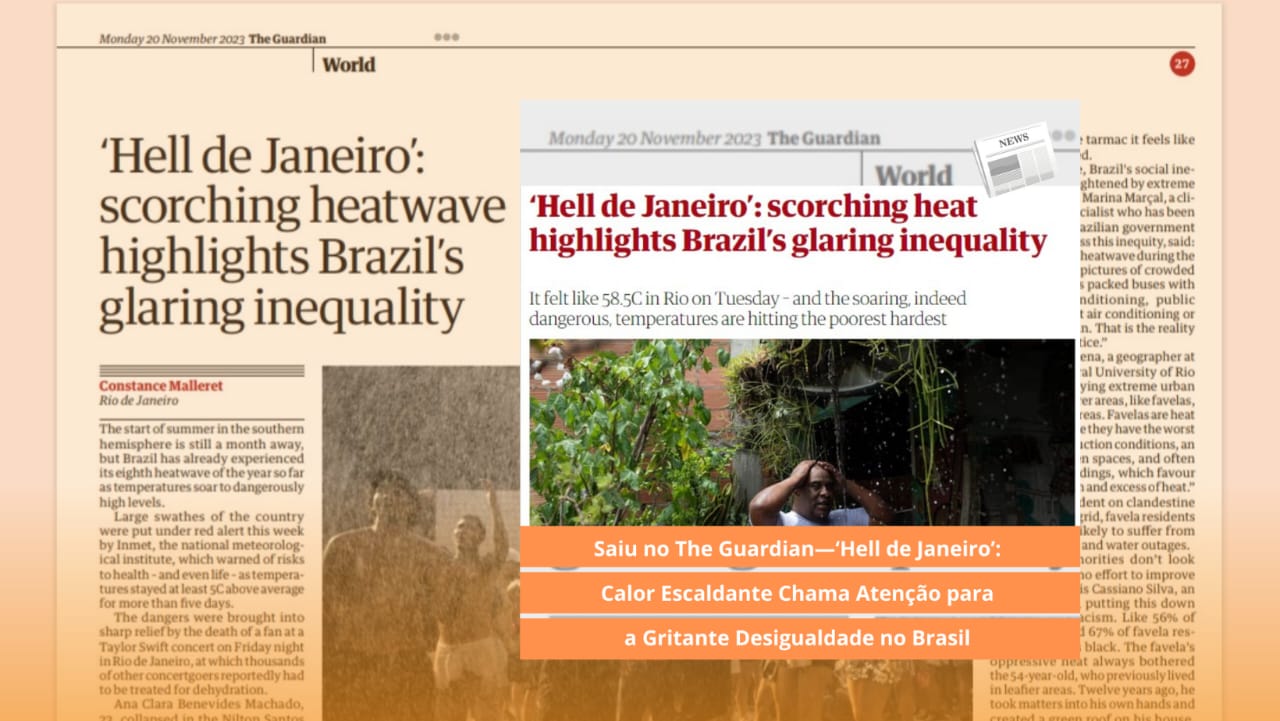
Solar energy as a solution in the favelas was also a focus among articles showcasing community-driven solutions to climate issues. In the article “How Organizers in Rio’s Favelas are Harnessing Solar Energy” by Next City, the inspiring solar project carried out at the Association of Women With Attitude and Social Commitment (AMAC), which has been fighting domestic violence in the Dique da Vila Alzira community in Duque de Caxias for over 10 years, in conjunction with the Sustainable Favela Network*, demonstrates the potential of distributed generation if it could be scaled in favelas.
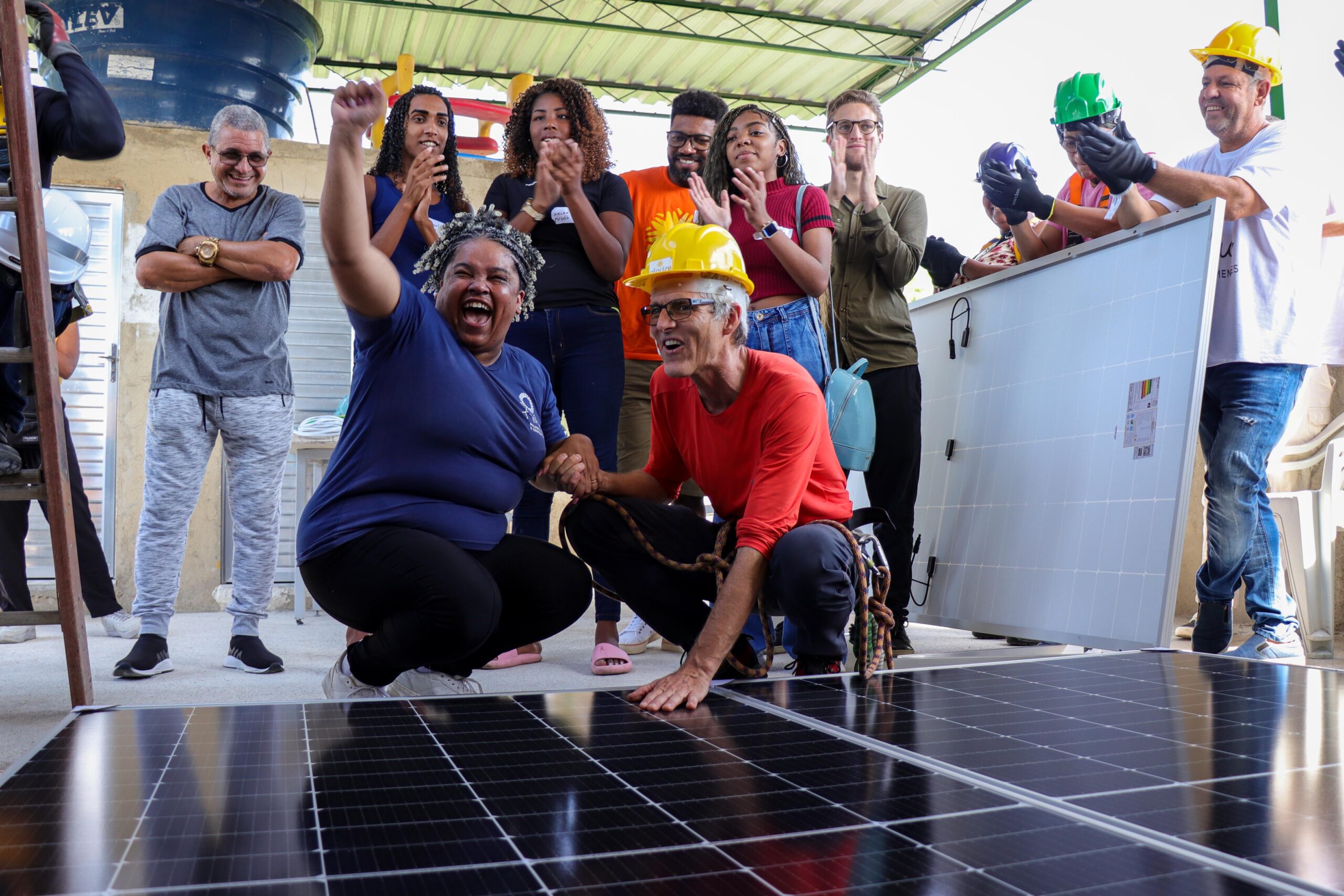
Housing, Architecture, and Urbanization in Focus
Taking a broader perspective on housing, the YouTube channel Tracks produced a documentary in Rio’s Morro da Providência and Tavares Bastos favelas for the series Show Me Where You Live:
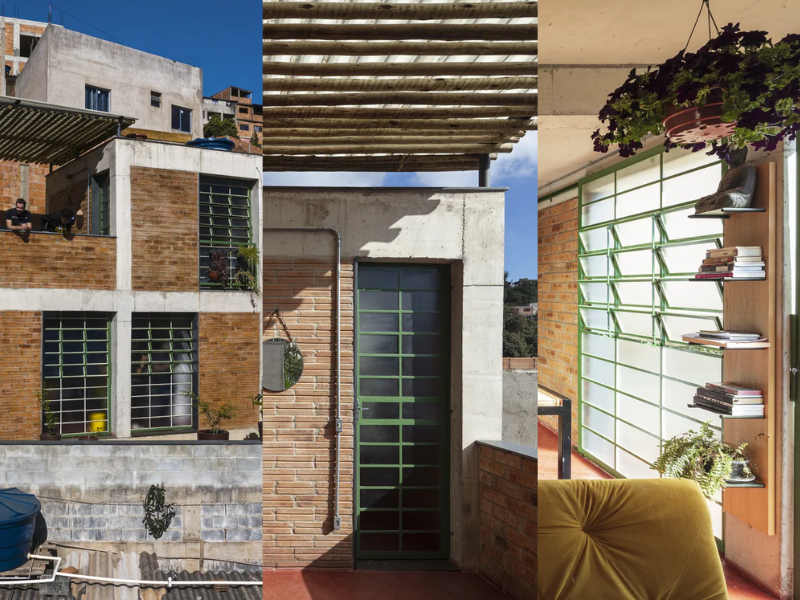
The house in a favela in Belo Horizonte that won an international architecture award for its innovative design garnered attention from the international media, reported by AFP and subsequently covered in many other outlets such as Reuters, The Jordan Times, The Times of Malta, The Taipei Times, and The Manila Post. The award-winning house is a two-story, brick and mortar home featuring well-planned spaces, unique decor, ample windows, and focuses on the resident’s use and comfort.
And it was reported that Rocinha, in Rio, no longer holds the title of the country’s largest favela, but rather Sol Nascente in Brasília, as per the Associated Press. The news outlet painted a realistic and respectful picture of Sol Nascente, using Rocinha as a means of comparison, given its global recognition. Since the AP, like AFP, are syndicated global news agencies, the story was republished in the Los Angeles Times and KTVZ, among many others.

Still on the subject of housing, an innovative photographic report produced in collaboration between a reporter and a resident of Ocupação Vitória in Diamantina, Minas Gerais, was featured on Al Jazeera. The piece, “‘Everything is a Priority’: How a Family Living in an Informal Occupation in Brazil Manages Their Expenses,” stands out as one of the most unique and respectful approaches on the list. It vividly outlines the daily struggles, as well as the financial challenges, faced by individuals living in favelas.
Throughout the year, there were notable publications on economic topics. The Brazilian Report featured an article on the economic potential of favelas titled “Brazilian Favelas Have a Huge, Untapped Potential.” The Conversation summarized a French study on family indebtedness in “How Debt Has Morphed into a New Form of Work for Women,” with characters from favelas around the world, including Brazil. The study asserts that women are the most affected by debts and their consequences.
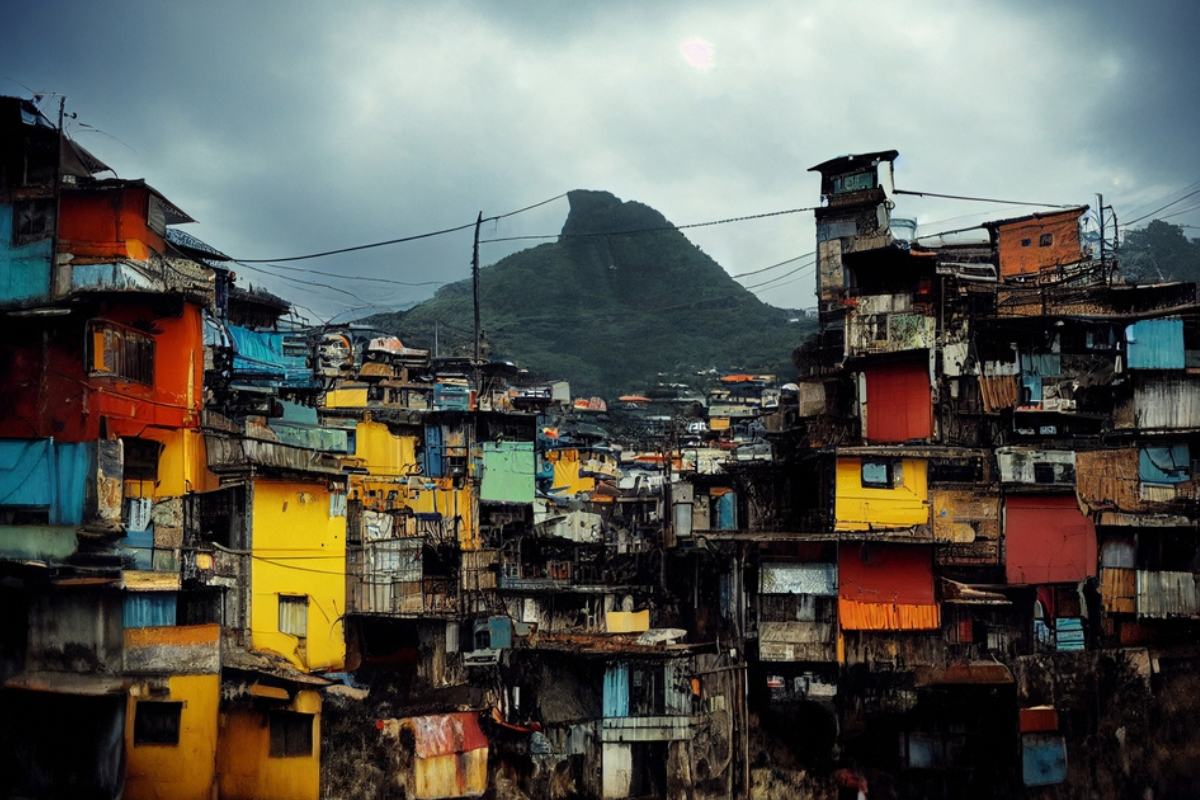
Violence Still Prevailed in International Media in 2023
Unfortunately, in 2023, it was still not possible to discuss foreign press coverage of favelas without touching on violence, police operations, and shootings. However, the focus was clearly on the disproportionate police violence, especially in early August, with Reuters highlighting that “Brazil, the country with the highest number of murders in the world, is also home to some of the planet’s most deadly police forces.” The BBC noted that 45 people were killed by the police in a few days in favelas across three Brazilian states. In Vila Cruzeiro, North Zone of Rio, the Associated Press reported on the latest massacre in the community, which claimed the lives of nine local victims and two police officers.
The Guardian published “‘The State is Murderous’: Brazilians Vow Justice for 13-year-old Boy Shot by Police,” covering the killing of Thiago Menezes Flausino, 13, victim of police violence in City of God. The unarmed boy was shot five times while riding a moto-taxi, returning home after a day of soccer practice and studying. In a poignant report, the English newspaper includes statements from family members and Thiago’s soccer coach, along with statistics highlighting the racist bias in police actions in Brazil.
Still in this context, The Brazilian Report revealed that “Police Bullets in Rio Aren’t Just Deadly, They’re a Public Health Hazard,” and InSight Crime provided a similar perspective, focusing on the economic harm brought to the favelas by the Brazilian war on drugs.
Another event covered by the international media was the coordinated series of attacks that paralyzed the West Zone of Rio de Janeiro in late October 2023. It is important to note that these attacks did not occur in favelas. However, as public perception is historically conditioned to associate such acts with favelas, it is crucial to analyze them. In this case militia members orchestrated the attacks in response to the death of one of the right-hand men of the state’s largest militia leader. The Guardian published, “Paramilitary Gangs in Brazil Torch More Than 35 Buses in Rio de Janeiro Attacks,” using an appropriate title to describe the situation connected to paramilitary groups and militias rather than favela residents. However, the majority of international coverage stemmed from the republication of the Reuters article, released with the generic title “Rio Gangsters Torch at Least 35 Buses after Crime Boss Killed,” requiring readers to delve into the text to understand that the article is not describing the drug traffickers widely associated with violence in the past, but rather a new threat: “Rio’s so-called militias, often composed of current and former police officers, [who] have become one of the region’s largest security threats.”
Culture in the Favelas: Beyond the Commonplace
Community organizers often express their discomfort with the traditional media’s coverage of culture in the favelas, which can be stigmatizing and limiting in the possible societal roles perceived for favela residents. When addressing subjects like food, culture, sports, religion, and fame, traditional media often depict the favela and its residents through the lenses of hunger, cultural deprivation, presenting sports or religion as the sole escape, and highlighting fame linked to drug trafficking or crime.
In 2023 this trend was broken by many international media outlets. AFP highlighted the importance of nonprofit organization Gastromotiva and Ana Lúcia Costa’s work with their solidarity kitchens in Rocinha in “Brazil Favela Chefs Say Poor Should Eat Well, Too.” A perspective is created not of outside salvation but of resident protagonism, fighting for their socially vulnerable neighbors to have access to tasty, sophisticated, nutritious, and healthy dishes. However, despite the positive coverage, AFP persistently and inaccurately uses the term slum in this article, which was republished in outlets such as The Tico Times, The Star, Kuwait Times and Malay Mail.
Another French news outlet, Le Monde published a piece highlighting favela community museums while underscoring their significance: “The working-class districts of Brazilian cities are seeing the emergence of ‘social museums,’ whose purpose is to value the invisible populations.”
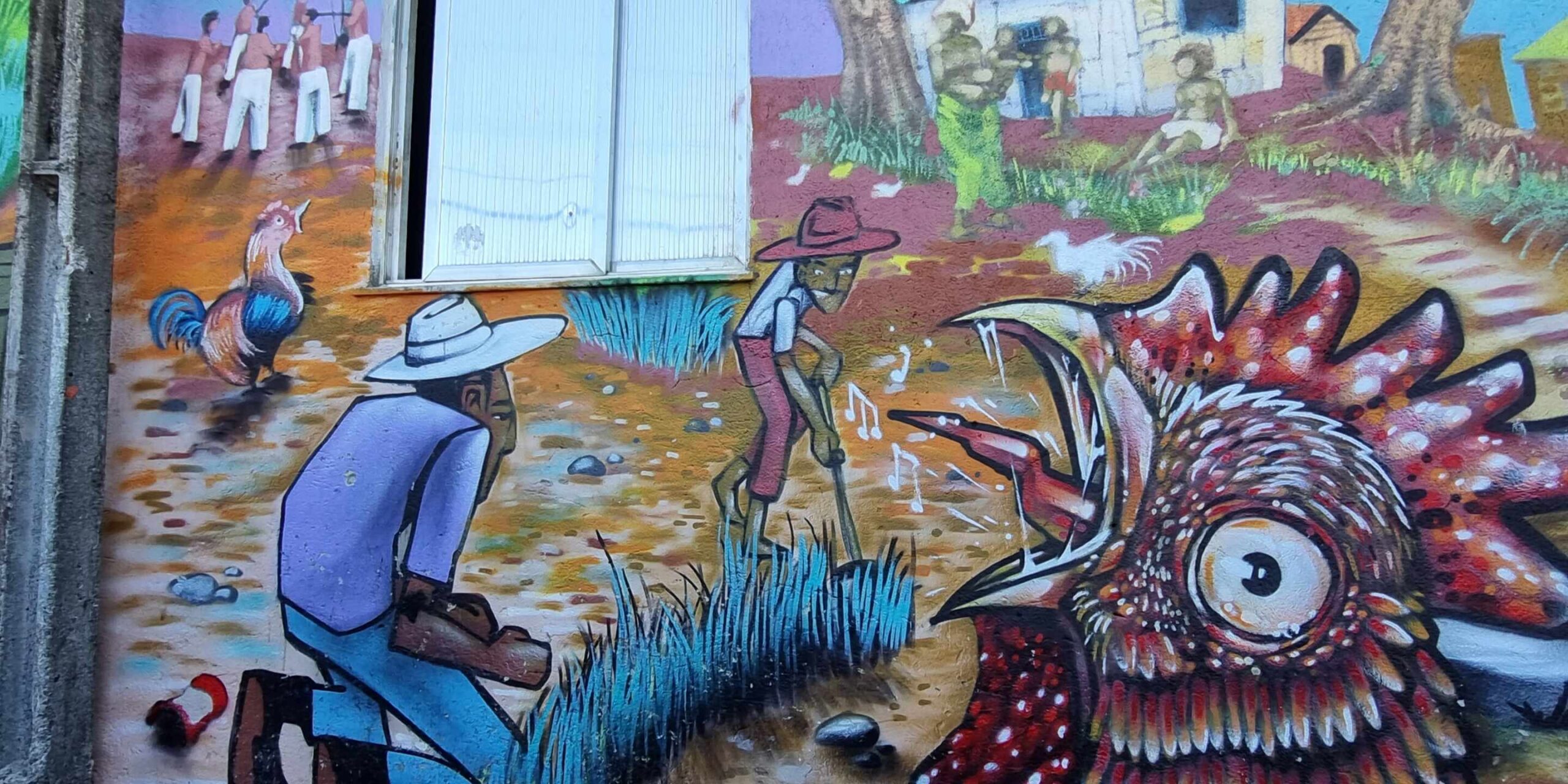
Le Monde presented innovative perspectives for reflecting on Brazilian social inequality, publishing an analysis on the significant disappearance of “maid’s quarters” from Brazilian homes, a legacy rooted in racism and slavery. The same newspaper provided an overview of the bate-bola carnival clowns, indelible characters from Rio de Janeiro’s peripheries and cultural heritage of the city’s favelas.
Still in the realm of culture, an interesting article was published in The Guardian about how a marginalized, Black, and favela-born music genre, funk, found its place in mainstream museums like the Rio Museum of Art (MAR).
During the year, topics in the global spotlight also yielded articles from favela perspectives. The Guardian, for example, published a piece on how young female players in the Beira-Mar community of Duque de Caxias are breaking gender norms and preparing for future World Cups. In addition, the film Barbie inspired an Associated Press video report on Complexo do Alemão’s Black Barbie.
In 2023, articles were also published in two international Catholic magazines. La Croix reported on the challenges the Brazilian Catholic Church has faced in denouncing human rights violations in the favelas. Meanwhile, the Black Catholic Messenger published an extensive and profound profile of Friar David Santos and his crucial role in implementing affirmative action policies in education through Educafro in Brazil.
Articles humanizing the favelas by showcasing interesting personalities were also published. The Guardian profiled content creator and Maré native Raphael Vicente in “Brazilian TikToker Goes Viral Showing the ‘Cheerfulness of the Favela.'”
And Time magazine featured Rene Silva, founder of world-renowned community newspaper Voz das Comunidades, in “This Brazilian Journalist is Giving Favela Residents a Voice.” The piece highlights the growth of the newspaper that now boasts a team of 35 covering “culture, politics, sports, education, and problems of state neglect.”
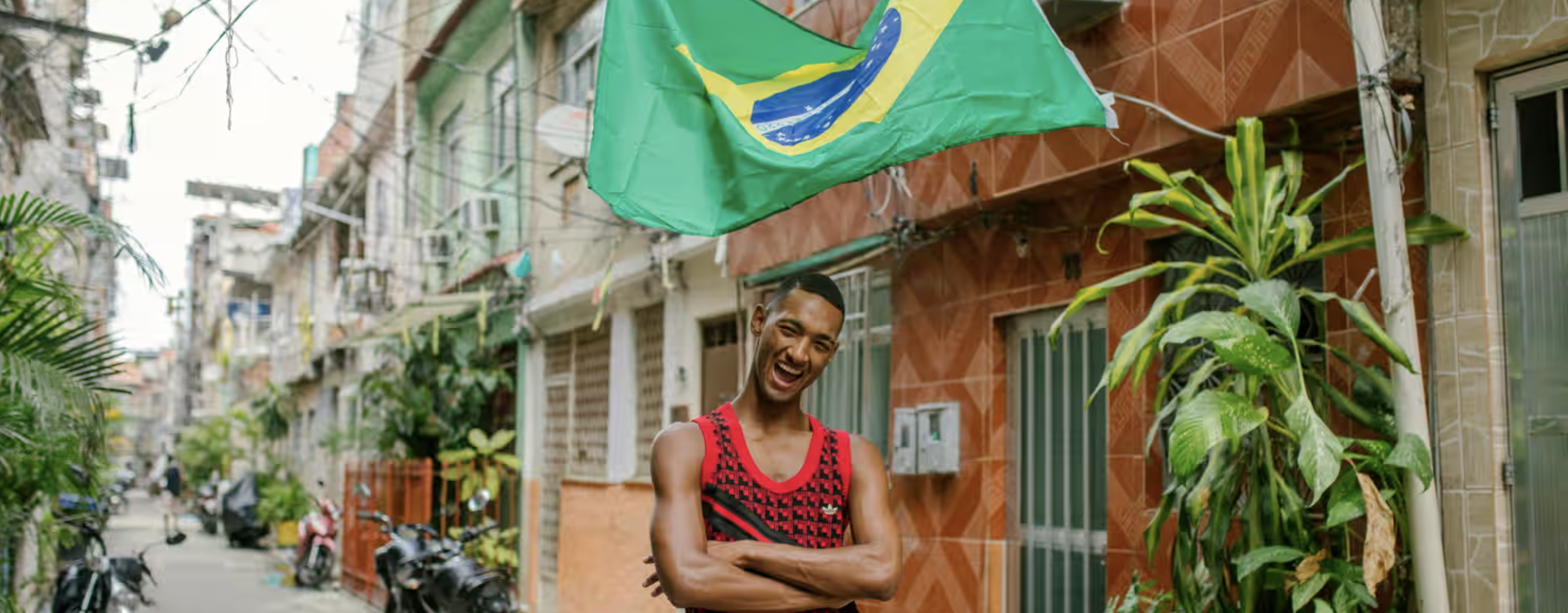
*The Sustainable Favela Network (SFN) and RioOnWatch are projects of NGO Catalytic Communities (CatComm).
